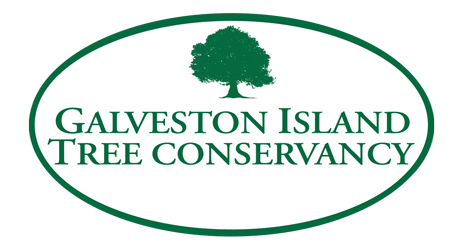Desert Willow
Desert Willow A Beautiful Bloomer
We are once again at the time of year that tests the mettle of people, dogs, and trees. Following our delightfully rainy winter and spring, summer has arrived to turn up the heat and dry us out.
One small tree that delights in this, while blooming profusely, is the Desert Willow (Chilopsis linearis). Relatively new to the island, most have been planted through the Tree Conservancy’s Neighborwoods Program. Curbside plantings are often the last to be irrigated and this tree prefers it that way. This native to west Texas and the Edwards Plateau is a common highway planting in that arid part of our state.
Desert willow can mature into a graceful 15-20 foot, multi-trunked tree. Its long narrow leaves resemble those of willows, although they are not related. It is in the Trumpet-Creeper Family (Bignoniaceae), related to the catalpa and Yellowbells (Tecoma stans). The tree can be left to grow naturally, thinned to fewer trunks, or pruned to suit small spaces.
A spectacular bonus is the production of trumpet-shaped, sweetly fragrant flowers ranging from light pink to violet or maroon that can appear from late spring to fall. Blossoms in showy clusters emerge at the tips of the branches on new wood. Pruning stimulates new growth and more blooms. Allowing the tree to dry out between waterings also encourages blooms, as does removing spent flowers and seed pods. In fall the leaves turn a beautiful yellow before they drop. Long slender seed pods remain through the winter.
This tough tree is easy to maintain. It enjoys the sun, has very high heat tolerance, and can also handle cold temperatures to 10 degrees F. It adapts to many soil types. There are no reported pests or diseases of major concern. There are few cautions: excessive water and too much fertilizer can cause overly rapid growth and a weaker plant with fewer blossoms. Prolonged “wet feet” can result in root rot so it must have good drainage.
Desert willow provides excellent habitat. It is a good pollinator and the blossoms are a nectar source that attracts butterflies, hummingbirds, and other insects. Foliage is the larval host of the white-winged moth and offers nesting materials for native bees. Seeds are a food source for birds.
Humans have found numerous uses for the tree over the years. Native Americans used leaves as an antifungal treatment and as a treatment for wounds. Leaf and flower concoctions were used to treat coughs and bronchial problems. The strong wood was used to craft hunting bows. It has also been used for items ranging from fence posts to woven baskets. Plantings can be used for erosion control.
So don’t be fooled by this tree’s delicate appearance. Its tolerance of drought and heat, ease of maintenance, and rapid growth, along with its attractive flowers and long flowering period, make it one of our best small native trees. There are numerous cultivars with varying bloom colors. Go find one at a plant nursery, harvest some seeds, or “borrow” a cutting and propagate one for your garden.
“Tree Stories” is an ongoing series of articles about outstanding Island trees, tree care, and tree issues. If you have or know of a special tree on Galveston Island that should be highlighted, please email treesforgalveston@yahoo.com. Margaret Canavan is a Galveston resident, a Galveston County Master Gardener, and a member of the Galveston Island Tree Conservancy Board.
If you have room this could go with the descriptive paragraph above.
Hurricane Ike caused the loss of 40,000 trees on Galveston Island. The Galveston Island Tree Conservancy was formed to address that loss and has replaced over 14,000 through grant-funded plantings and giveaways.

